
Tracing roots across the Red Sea: nouf saleh’s ode to the Muwalladeen community
Published November 19th, 2024 by Myah Goff
'Black Memory Red Sea' at Public Functionary weaves together family photographs and a Yemeni-inspired architecture installation to create a portrait of saleh's Ethiopian-Yemeni identity
Banner image: nouf saleh, Map of Albahar Alahamar, 2024. Image on silk.
As you step into nouf saleh’s solo exhibition Black Memory Red Sea, a soft neon-blue sign reading “sawad” (“Blackness” in Arabic) greets you from across the gallery with quiet urgency. Through intimate family photographs, mixed-media installations, and a map linking Ethiopia and Yemen, saleh confronts the erasure of Afro-Arab communities through an exploration of her family’s heritage and migrations across the Red Sea.
The exhibition, located in Public Functionary’s Upstairs gallery, addresses themes of displacement, assimilation, survival through secrecy, and preservation of her Afro-Arab roots in a world that seeks to suppress them.
“I grew up in Yemen. Part of assimilation is not thinking about the Ethiopian side of me,” saleh said. “Anti-Blackness is global — it shows up in different ways. Growing up in Yemen, we were able to embody some of our Ethiopian-ness within the house or with other families like ours…but once we went out in public, we were Yemeni.” In practice, this meant speaking Arabic instead of Amharic and adopting local customs — a survival tool in a society where Blackness is often marginalized.
“Part of surviving was to remove that from our imagination that we are Black,” saleh said. “I think I’m the only one in my generation that understands and (disfluently) speaks Amharic.”
When saleh moved to the United States to study architecture at St. Olaf College, her understanding of her identity deepened. “Being in the U.S. and learning more about how race functions here, I think it gave me more language to think of my experience or even see myself as a Black person,” she said.
Black Memory Red Sea combines works created over several years, informed by her architectural background and family archive. “I’m re-membering my Blackness through this work,” saleh said, with her research and artistic exploration becoming a language for processing the complexities of growing up muwalladah — an Arabic term meaning “mixed blood.”
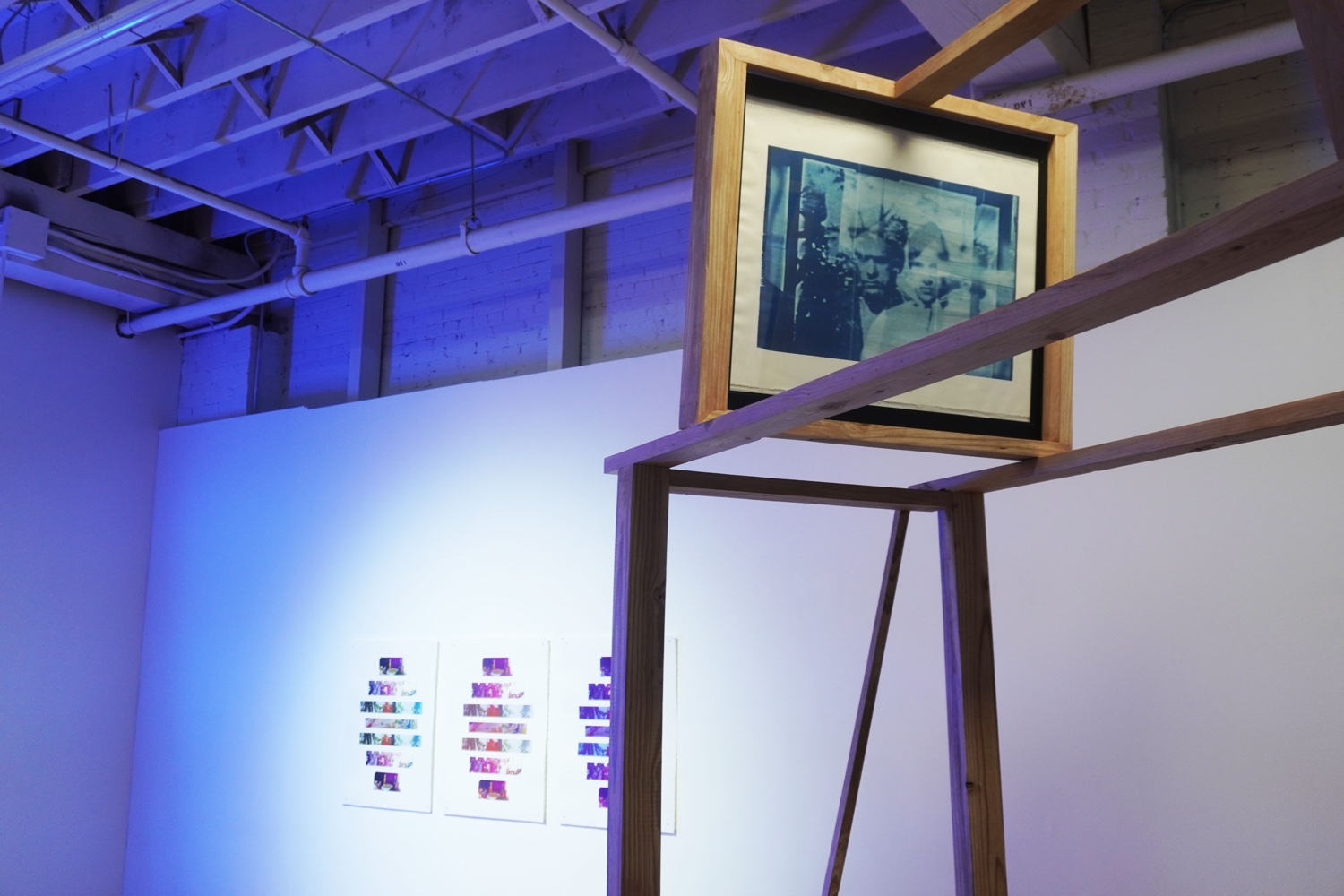 nouf saleh, Goree, Ethiopia, 2022. Cyanotype, wood sculpture. Photo by Myah Goff.
nouf saleh, Goree, Ethiopia, 2022. Cyanotype, wood sculpture. Photo by Myah Goff.
The show’s centerpiece is a cedar-wood sculpture holding a single photograph of saleh’s Ethiopian grandmother and Yemeni grandfather, reproduced twice in cyanotype and facing each other above arches inspired by Yemeni architecture. “That image was one of the few I grew up seeing of my grandparents,” saleh said. Though she never met them and knows little about the photo’s origin, it offers a glimpse into her family’s past.
“My mom and my aunts and uncles would not give us stories from their upbringing in Ethiopia,” she said. “It would be like, ‘why are you asking these questions?’ So, this felt like a way for me to connect with them in my own way.”

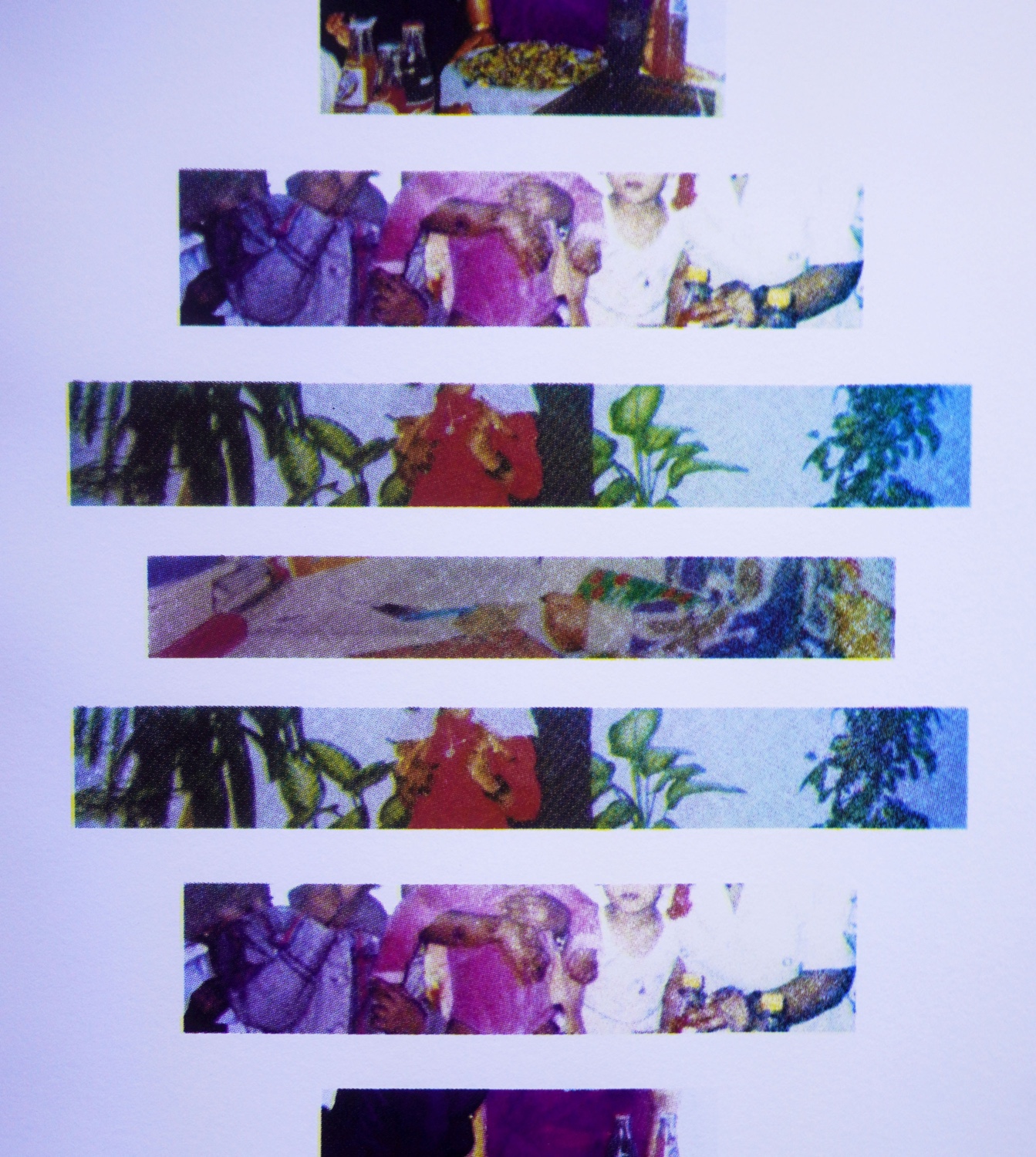 nouf saleh, الجنة بين يديها Paradise in Her Hands (installation view and detail), 2024. Silkscreen on paper. Photos by Myah Goff.
nouf saleh, الجنة بين يديها Paradise in Her Hands (installation view and detail), 2024. Silkscreen on paper. Photos by Myah Goff.
Still, there’s a palpable sense of secrecy in saleh’s work. Her childhood photographs, titled Paradise in her Hands, show only the hands of matriarchs — reaching, holding, or supporting.
“Growing up, we were taught that ‘paradise’ is under our mother’s feet,” she said. “Honoring one’s mother is like a pathway to heaven, or paradise, so in this series, I am working with that, but I wanted to focus on the hands of the women that shaped us and how they held us, raised us, and cared for us in different ways.”
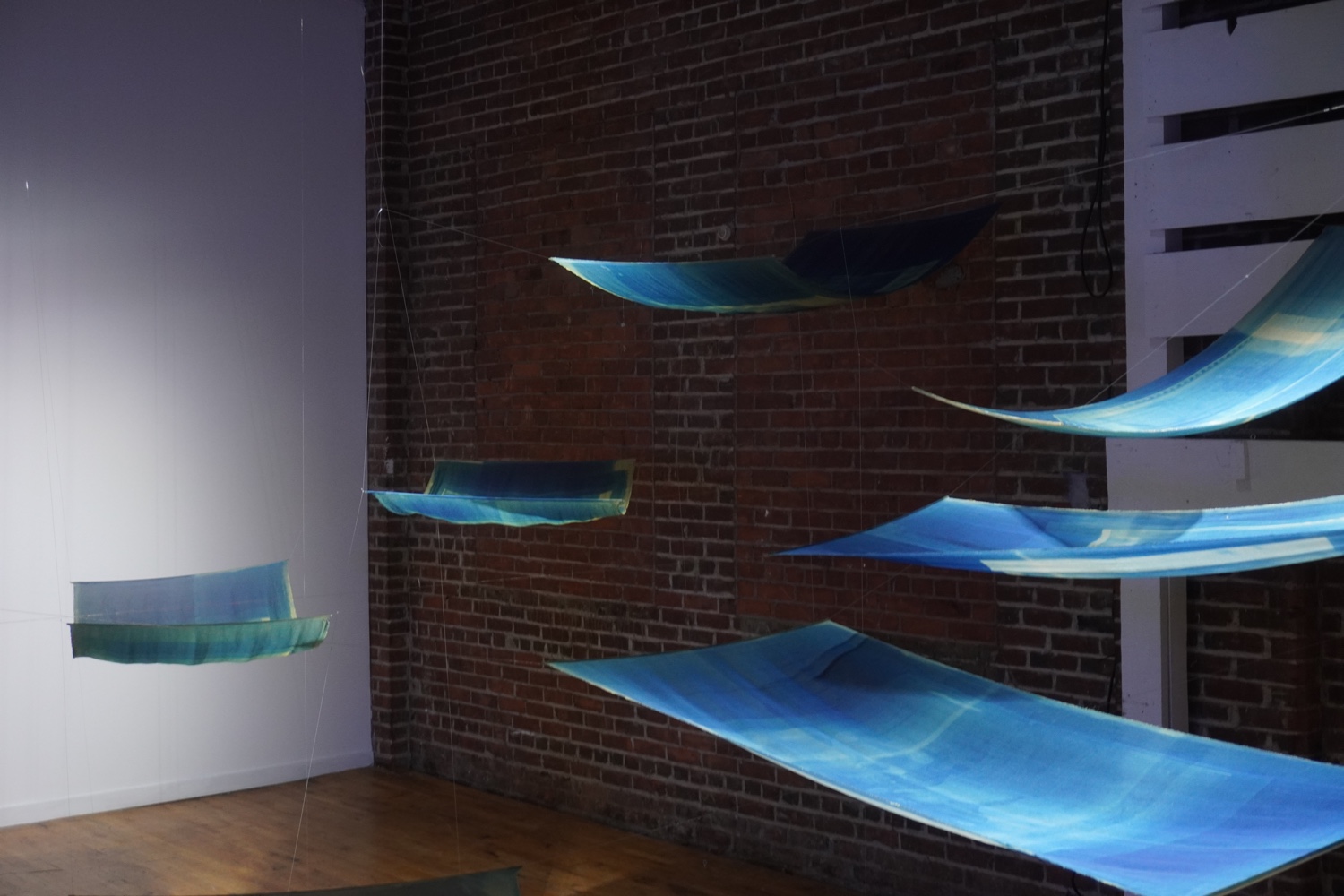
 nouf saleh, Dinibi: Ode to Cousinship (installation view and detail), 2023. Cyanotype on silk, coral beads, edited song. Photos by Myah Goff.
nouf saleh, Dinibi: Ode to Cousinship (installation view and detail), 2023. Cyanotype on silk, coral beads, edited song. Photos by Myah Goff.
Other images, in the installation titled Dinbi: Ode to Cousinship, are barely visible, printed faintly on blue silk that drifts down from the ceiling like memories caught in fog. They seem to be her way of saying, This is what I have, this is what I remember, even if it is mostly formed through distant memories. They force you to lean in, straining to discern, and as you do, the song “Dinibi” by Ethiopian musician Ahmed Teshome begins to play. A song that evokes memories of a childhood game saleh played with her cousins.
“I think of them as my first friends, running around and learning how to relate and be in the world,” she said. “This is my story, and it's not only mine, so I wanted to bring them with me.”
Her limited family archive mirrors the fragmented histories of countless diasporic families, including my own. My grandparents left Durango, Mexico, in the 1960s and settled in Chicago’s Pilsen neighborhood, a hub of Irish, German, Czech, and Mexican immigrants. When my grandfather became a U.S. citizen, he changed his birthday to match the day the Declaration of Independence was signed, giving birth to a new, distinctly American version of himself. This act of redefining oneself and silencing the past for survival is a universal experience. saleh’s work navigates this dislocation by capturing the resilience of family as a grounding force in the diaspora experience.
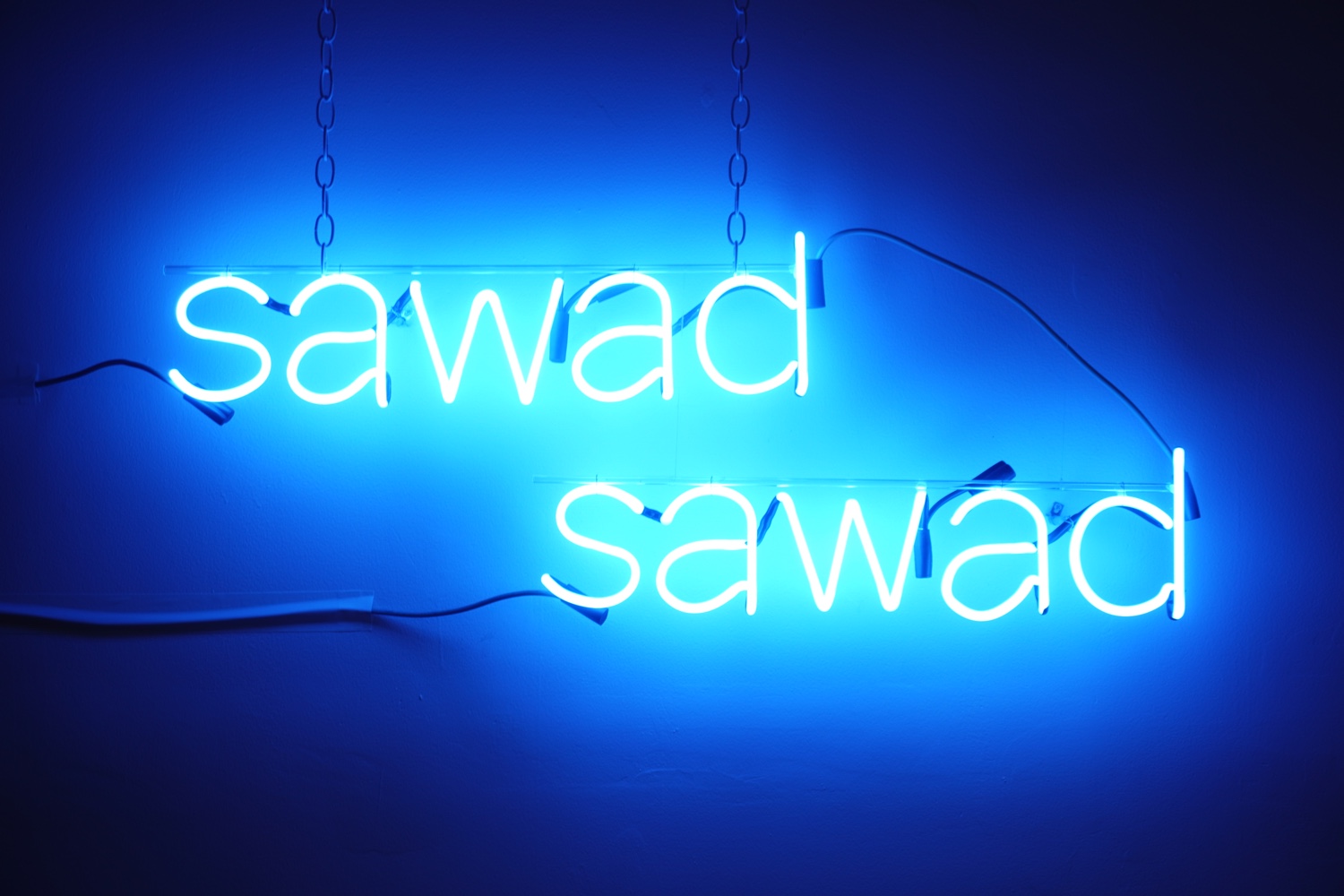 nouf saleh, Untitled (sawad x2), 2024. Neon. Photo by Myah Goff.
nouf saleh, Untitled (sawad x2), 2024. Neon. Photo by Myah Goff.
“I hope [this show] complicates the notions of what it means to be mixed, and I don’t speak for all Afro-Arabs,” she said. “This is only one Afro-Arab experience.”
While the exhibit may not reveal everything about saleh’s story, she gives us the bones. It is a family portrait not solely bound by history but by feeling — a map through which viewers, too, can trace their own lineage. ◼︎
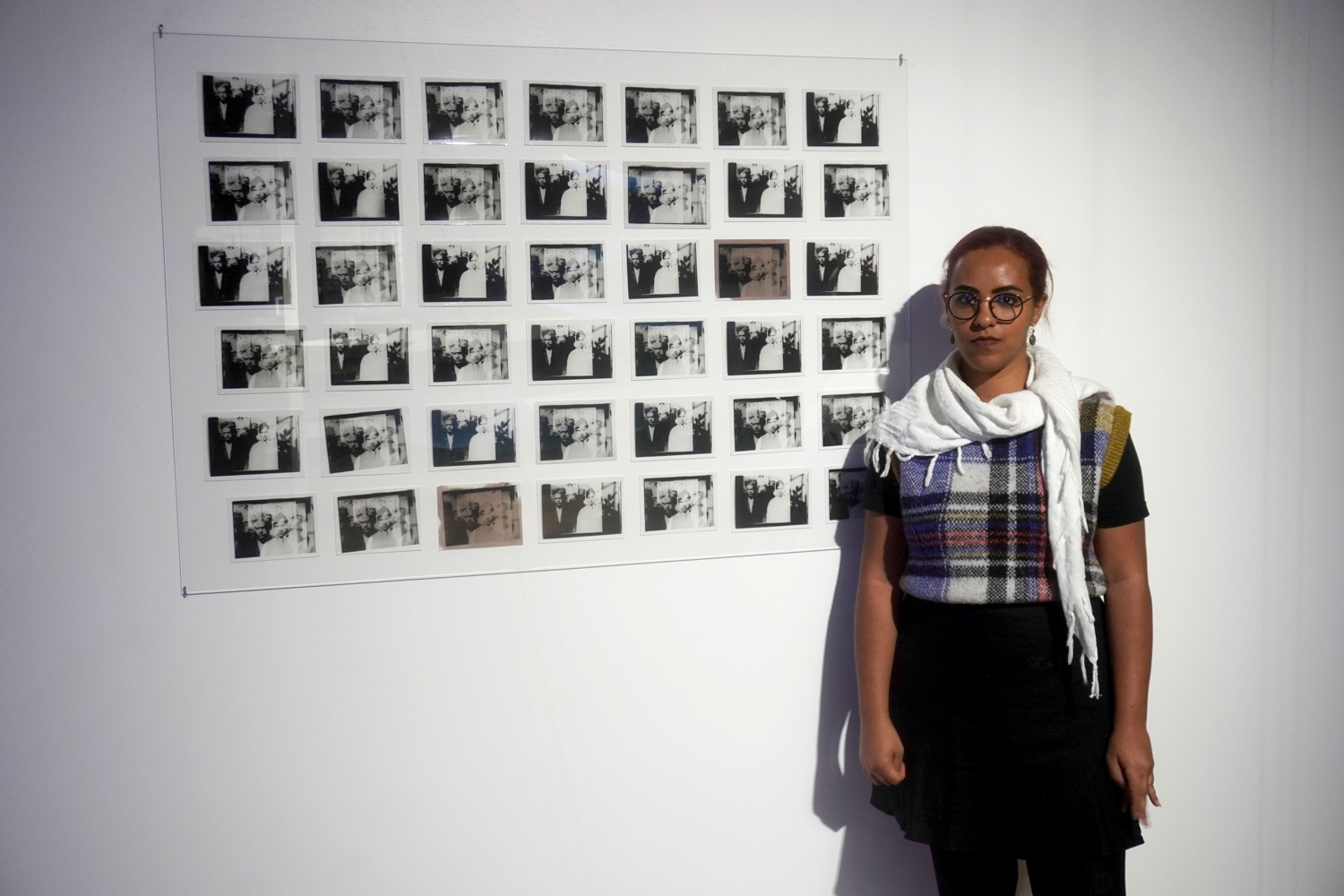 nouf saleh stands beside Untitled (Goree), 2021. Prints. Photo by Myah Goff.
nouf saleh stands beside Untitled (Goree), 2021. Prints. Photo by Myah Goff.
Black Memory Red Sea is on view at Public Functionary through November 30. Gallery hours are Thursday — Saturday, 12 — 6 pm. To see more of the artist's work, visit noufsaleh.com or follow her on Instagram @noufananah.
There will be an Artist Talk on Saturday, November 23, at 6pm.
We can't do it without you.
Help keep independent arts journalism alive in the Twin Cities.